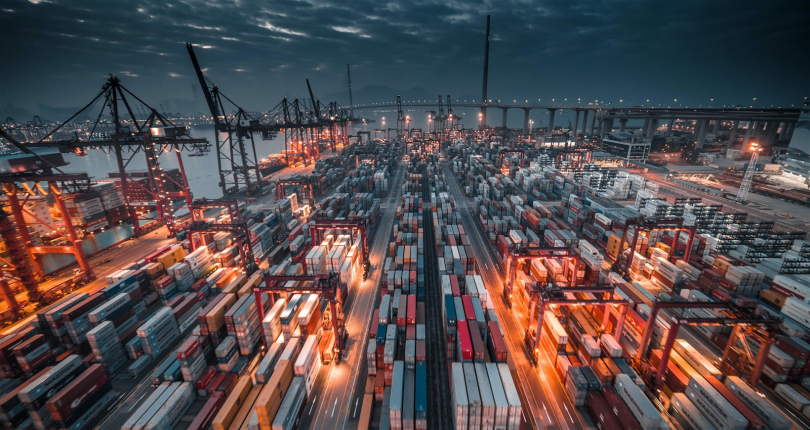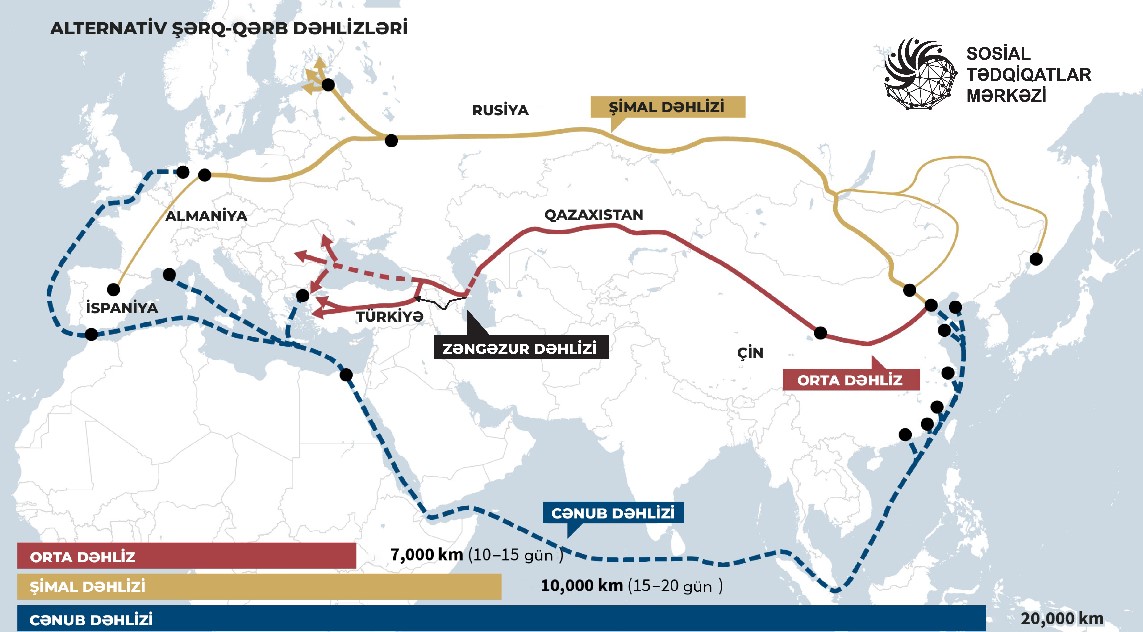
The rapid advancement of science and technology, along with the increasing pace of trade between countries and the expansion of global goods exchange, have brought new trade corridors and alternative routes to the forefront. This trend became especially noticeable after the introduction of a new tariff policy by U.S. President Donald Trump, which served as a catalyst for the emergence of a range of new trends.

The traditional East-West trade route, which had been considered the main path of global trade since the 18th century, no longer aligns with today’s realities. By imposing tariffs on products from countries such as Canada, Mexico, China, and European states, Washington is attempting to shift the existing trade balance. As a result, partner countries are now forced to explore new markets.
In addition to the United States, there are two other key economic centers in the world: China and the European Union. These two economic giants account for nearly half of the global economy, and the volume of trade between them continues to grow steadily.

According to data from the World Bank, in 2023, trade between China and the European Union reached approximately 739 billion euros, making China the EU’s largest trading partner. Based on the data, the EU's exports to China amounted to 223.6 billion euros, while imports from China totaled 515.9 billion euros [1].
Looking at the structure of foreign trade, it can be noted that the European Union mainly exports machinery and equipment, vehicles, chemicals, luxury goods, and agricultural products to China. In return, China supplies the EU primarily with electronics, high-tech equipment, electric batteries and components, toys, household appliances, textiles, and clothing.
CONSEQUENCES OF TRUMP’S TARIFF POLICY
Before Donald Trump’s implementation of strict tariff measures, analysts predicted a weakening of trade relations between the West and the East. According to a report by the Boston Consulting Group published earlier this year, it was expected that by 2033, trade volumes between these regions would decrease by 1.2% annually, leading to an overall decline of 221 billion dollars. However, Trump’s aggressive tariff policy towards both China and Europe has changed this outlook [2].
Today, many analysts believe that Trump’s new economic strategy will weaken trade relations between the United States and both Europe and China. In response, however, further economic integration between China and the European Union can be expected.
Simon J. Evenett, a professor at the University of St. Gallen (Switzerland), and Fernando Martín Espejo, head of the Analytics Unit at the Global Trade Alert at IMD Business School, emphasize in their article published two weeks ago that, contrary to expectations, Trump’s tariff measures could actually boost trade between the East and the West. According to them, Chinese goods that are being pushed out of the American market will likely find their way into Europe, leading to an increase in trade between the two economic centers [4].
A similar scenario unfolded during the U.S.–China trade war between 2017 and 2019; however, the current situation appears significantly more serious. This time, Trump’s approach is more structured, and China’s economy is considerably better equipped to withstand external pressures.
EXPLORING NEW TRADE ROUTES IN GLOBAL COMMERCE
Shifting dynamics in international trade are pushing countries to seek out alternative transit routes with greater urgency. In this context, fast and secure transportation corridors are becoming increasingly important.
Currently, there are three main alternative routes connecting East and West: the Northern, Middle, and Southern routes.

Each of these routes has its own advantages, but thanks to its geographic location, the Middle Corridor stands out as the shortest. It spans roughly 7,000 kilometers, compared to 10,000 kilometers for the Northern Corridor and 20,000 kilometers for the Southern Corridor.
RISKS AND OPPORTUNITIES
When it comes to security, the Northern Corridor faces significant challenges. The ongoing conflict between Russia and Ukraine, which began in 2022, poses a serious threat to the safety of freight transit through the region. Western nations are also increasingly concerned about the possibility of the conflict spilling over into Eastern Europe. In addition, strained relations between Russia and the European Union raise the risk that the Northern Corridor could be politically blocked [3].
The Southern Corridor, too, is fraught with security concerns. The outbreak of hostilities between Hamas and Israel in 2023, which continues to this day, along with Houthi attacks on commercial vessels in Yemen and persistent piracy around the Horn of Africa, have made this route highly unstable.
ADVANTAGES OF MIDDLE CORRIDOR
The Middle Corridor offers advantages both geographically and from a security standpoint. This route passes through Kazakhstan, the Caspian Sea, Azerbaijan, Georgia, Türkiye, and European countries, none of which are currently experiencing active military conflicts.
In recent years, two significant events have strengthened the position of the Middle Corridor:
Azerbaijan's victory in Karabakh ended a prolonged occupation in the South Caucasus and reaffirmed the strength of the Azerbaijani state.
The news of the dissolution of the PKK terrorist organization has bolstered Türkiye's internal security, which in turn has enhanced the stability of the Middle Corridor.
Some analysts point to risks related to the 2008 Georgia-Russia conflict and the issues surrounding South Ossetia and Abkhazia. However, overall, the Middle Corridor is considered the most stable and promising alternative route.
NEED FOR AN ALTERNATIVE: ZANGEZUR CORRIDOR
Azerbaijan has introduced the Zangezur Corridor, which would serve as an extension of the Middle Corridor. This route has the potential to greatly enhance the connection of Iran, Iraq, Syria, and the countries of the Persian Gulf to the future transit network.
Recent statements by President Ilham Aliyev during his visit to China, Azerbaijan’s growing energy policy across various regions, and the infrastructure projects currently being implemented clearly demonstrate that Baku is becoming one of the key players in the Middle Corridor project [1].
References:
1. EU trade relations with China. Facts, figures and latest developments.
https://policy.trade.ec.europa.eu/eu-trade-relationships-country-and-region/countries-and-regions/china_en#:~:text=China%20is%20the%20EU's%20second,and%20the%20biggest%20for%20imports
2. Prezident İlham Əliyev Bakıda keçirilən "Orta Dəhliz boyunca: geopolitika, təhlükəsizlik və iqtisadiyyat” mövzusunda beynəlxalq konfransda iştirak edib /25 noyabr 2022/ - https://president.az/az/articles/view/579683. Great Powers, Geopolitics, and the Future of Trade. /January 13, 2025/ - https://www.bcg.com/publications/2025/great-powers-geopolitics-global-trade?utm_source=chatgpt.com
4. How Houthi Attacks in the Red Sea Threaten Global Shipping /January 12, 2024/- https://www.cfr.org/in-brief/how-houthi-attacks-red-sea-threaten-global-shipping
5. Simon Evenett, Fernando Martín Espejo. Redirecting Chinese Exports from the USA: Evidence on Trade Deflection from the First U.S.-China Trade War. /14 Apr 2025/ - https://globaltradealert.org/reports/Redirecting-Chinese-Exports-from-the-USA
Kazim Kazimov, Social Research Center
Mr. Kazim Kazimov holds a bachelor's degree in journalism from Nakhchivan State University and a master's degree in economic policy from Istanbul University. He is a regular contributor to local and international media, providing analysis and commentary on foreign and domestic policy issues.
